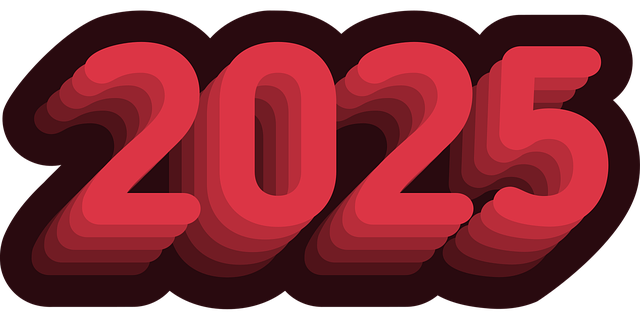By 2025, address slow internet by checking hardware, restarting devices, and optimizing Wi-Fi settings. Update router firmware, manage background data consumption, and communicate with ISPs for better performance, crucial for remote learning, digital literacy, and engaging online experiences in an increasingly connected world.
In 2025, a slow internet connection can be more than just an annoyance—it can hinder productivity and entertainment. Fortunately, quick fixes can dramatically improve your online experience. This article guides you through practical solutions, starting with identifying hardware issues and progressing to advanced strategies like optimizing Wi-Fi settings and updating router firmware. Learn how to limit background data usage and when to reach out to your internet service provider for additional support.
- Check for Hardware Issues
- Restart Devices and Modem
- Optimize Wi-Fi Settings
- Update Router Firmware
- Limit Background Data Usage
- Contact Internet Service Provider
Check for Hardware Issues

In 2025, slow internet connections can be frustrating, but before reaching for the router, consider potential hardware issues causing the speed bump. Check your modem and router to ensure they are functioning correctly; outdated or faulty equipment may be the root cause. Sometimes, simple solutions like resetting the devices or replacing a damaged cable can significantly improve your connection speed. If you’re using a wired connection, verify all cables are securely plugged in; loose connections often lead to slower speeds.
For wireless connections, obstacles like large appliances, walls, or other electronic devices nearby can interfere with signal strength. Try moving these items away from your router and devices for a personalized assessment of your network performance. If the problem persists, consider whether your internet service provider (ISP) is offering the speed you’re paying for. In such cases, it might be time to explore innovative solutions like artificial intelligence tutoring systems or project-based learning methodologies that enhance both connectivity and digital literacy—a call to action for busy professionals to give us a call at Microlearning to stay ahead in 2025.
Restart Devices and Modem

In 2025, internet connectivity has become an integral part of our daily lives, whether it’s for work, study, or leisure. If your internet connection is running slow, a simple yet often overlooked solution is to restart both your devices and modem. This quick action can resolve many connectivity issues caused by temporary glitches or network congestion. By restarting, you refresh the network connection, clearing any accumulated data packets that might have slowed down your speed.
For busy professionals juggling multiple tasks, including online meetings and microlearning for efficient work, a simple restart could be the difference between a productive day and one filled with frustration. Similarly, students relying on distance education certificate programs or engaging in online safety and security discussions need a stable internet connection to participate actively without buffering or lag. Even if you’re enjoying the advantages of a flipped classroom model, a slow internet can disrupt the learning experience. So, before investing in complex solutions, try restarting your devices and modem to see if it brings back the speed you need for modern digital engagement.
Optimize Wi-Fi Settings

In 2025, optimizing your Wi-Fi settings can significantly boost your internet speed and overall online experience. Start by ensuring your router is positioned strategically to maximize signal strength. Remove any physical obstacles between your device and the router, such as walls or large appliances. Additionally, update your router’s firmware to the latest version, as this often includes performance enhancements and security patches. Consider using a Wi-Fi analyzer tool to identify and select the least congested channel for your network, reducing interference from neighboring networks.
For an enhanced online learning experience, especially with resources like life-long learning platforms, interactive math software reviews, and personalized assessment strategies available, optimizing your Wi-Fi is crucial. Imagine immersing yourself in augmented reality in science classrooms, accessing these valuable tools seamlessly without lag or buffering. By tweaking your Wi-Fi settings, you can ensure that your internet connection supports the interactive nature of these educational resources, making learning more engaging and efficient for everyone.
Update Router Firmware

In 2025, ensuring your internet connection is optimized for seamless remote learning best practices and efficient digital citizenship curriculum guidelines is paramount. One often overlooked aspect that can significantly boost your network speed is updating your router firmware. This simple yet powerful move can unlock significant improvements in performance. Older firmware versions may lead to slower speeds, frequent dropouts, or even security vulnerabilities, making it crucial to keep your router’s software up-to-date.
By keeping your router’s firmware current, you’re not just enhancing internet speed; you’re also fortifying your network against emerging threats. This is especially important as we continue to integrate inclusive education strategies for diverse learners into our digital landscape. If you’re experiencing persistent connectivity issues, consider giving us a call at personalized assessment strategies to troubleshoot further.
Limit Background Data Usage

In 2025, with an increasing reliance on digital services, managing data usage is key to maintaining a swift internet connection. One often-overlooked area for optimization is background data usage. Many applications run in the background, consuming significant bandwidth even when you’re not actively using them. Limiting this activity can drastically improve your internet speed. Most devices offer settings to manage background data, allowing you to set limits or completely disable updates for specific apps during peak hours. This simple adjustment ensures that your connection remains efficient and responsive.
By curbing unnecessary data usage in the background, you create a more balanced network environment. This is especially beneficial when considering modern trends like gamifying educational content, where personalized learning paths require substantial bandwidth. Furthermore, adhering to these practices aligns with the digital citizenship curriculum guidelines promoting responsible online behavior. So, not only will your internet experience become smoother, but you’ll also be contributing to a more sustainable and efficient online ecosystem. Visit us at artificial intelligence tutoring systems anytime for more insights on staying connected in 2025.
Contact Internet Service Provider

If your internet connection is consistently slow and performing below par, it might be time to involve your Internet Service Provider (ISP). In 2025, efficient communication between consumers and ISPs has become even more crucial for resolving technical issues. Contacting your ISP can provide valuable insights into potential problems within their network or in your service plan that may contribute to the slow speeds. They have access to real-time data and tools that can help diagnose the issue.
Moreover, discussing your remote learning experience and the challenges you face due to slow internet can also prompt ISPs to offer tailored solutions. With remote learning best practices gaining importance, personalized assessment strategies and time management techniques for learners becoming more popular, ensuring a reliable internet connection is paramount. Even if your current plan is sufficient for basic browsing, reaching out to your ISP could unveil opportunities to enhance your online experience, including improved speeds suitable for engaging in modern educational tools like interactive math software reviews.
In 2025, navigating an online world requires a robust internet connection. While challenges may arise, these quick solutions offer a starting point for troubleshooting slow connections. From hardware checks to optimizing Wi-Fi settings and updating router firmware, these steps can significantly improve your online experience. By limiting background data usage and consulting with your Internet Service Provider, you can further enhance performance. Remember that a little maintenance goes a long way in keeping your digital life running smoothly.
